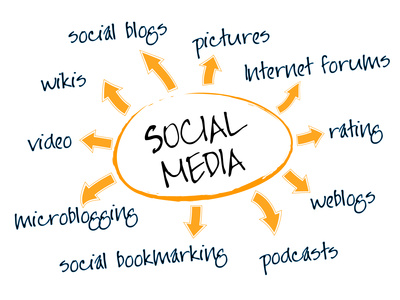Before We Get Started…
Let me say, before I list these, that I’m attempting to bring in both perspectives in ways that are not offensive. These aren’t research articles that are necessarily representing my point of view, but rather provide insight into all views (without calling the opposing view stupid or wrong).
Week 1: Sexualization, Marginalization, and Causation- OH MY!
For week one, we talked about the sexualization of characters, marginalization in gaming communities, and possible causation of sexism in gaming. Per our discussion, I haven’t been subjected to sexism in gaming, and Micah sees it happening and thinks that the players are at fault; not the game devs. John brought up the advertising aspect, noting that advertisers lead the trends, and gamers follow. I reminded him that while we have correlation, we don’t really have causation.
References:
Bice, M. (2011). On men’s sexualization in video games. Gamasutra. Retrieved from: http://www.gamasutra.com/blogs/MattieBrice/20111129/9003/On_Mens_Sexualization_in_Video_Games.php
Bycer, J. (2012). . The difficulties and controversies of designing female characters: Or how not to add a woman’s touch. Gamasutra.
Cassell, J., & Jenkins, H. (2000). From Barbie® to Mortal Kombat: Gender and Computer Games. MIT Press.
Dickey, M. D. (2006). Girl gamers: the controversy of girl games and the relevance of female-oriented game design for instructional design. British journal of educational technology, 37(5), 785–793.
DuVoix, H. (2012). Venus in Mars: Gender equality in fighting games. Ontological Geek. Retrieved from: http://ontologicalgeek.com/venus-in-mars-gender-equality-in-fighting-games/
Ivory, J. D. (2006). Still a Man’s Game: Gender Representation in Online Reviews of Video Games. Mass Communication and Society, 9(1), 103–114. doi:10.1207/s15327825mcs0901_6
Nerdlove. (2011). Nerds and male privilege. Paging Dr. Nerdlove. Retrieved from: http://www.doctornerdlove.com/2011/11/nerds-and-male-privilege/
Sharkey, S. (n.d.). Top 5 most attractive, non-sexualized women in games. 1Up.com. Retrieved from: http://www.1up.com/features/top-5-attractive-nonsexualized-women
Week 2: An Ode to Those Media Literate Kiddos!
 In week two, we talked about children (of all ages) and the benefits of media literacy. We discussed educational uses for media, motivations in gaming, and things that can be learned from each genre of game. Micah, John, and I all discussed our favorite game genres, and what we feel we’ve learned from them.
In week two, we talked about children (of all ages) and the benefits of media literacy. We discussed educational uses for media, motivations in gaming, and things that can be learned from each genre of game. Micah, John, and I all discussed our favorite game genres, and what we feel we’ve learned from them.
References:
Annetta, L. A. (2010). The “I’s” have it: A framework for serious educational game design. Review of General Psychology, 14(2), 105–112. doi:10.1037/a0018985
Barnett, J., & Coulson, M. (2010). Virtually real: A psychological perspective on massively multiplayer online games. Review of General Psychology, 14(2), 167–179. doi:10.1037/a0019442
Cole, H., & Griffiths, M. D. (2007). Social Interactions in Massively Multiplayer Online Role-Playing Gamers. CyberPsychology & Behavior, 10(4), 575–583. doi:10.1089/cpb.2007.9988
Dieterle, E., & Clarke, J. (in press). Multi-user virtual environments for teaching and learning. In M. Pagani (Ed.), Encyclopedia of multimedia technology and networking (2nd ed). Hershey, PA: Idea Group, Inc.
Floyd, D. (2008). Video games and learning[Web Video]. Retrieved from: http://www.youtube.com/watch?v=rN0qRKjfX3s
Gackenbach, J. (Ed.). (2007). Psychology and the internet : intrapersonal, interpersonal, and transpersonal implications. Amsterdam; Boston: Elsevier/Academic Press.
Giles, D. (2010). Psychology of the media. Houndmills, Basingstoke, Hampshire; New York: Palgrave Macmillan.
Ohler, J. (2008). Digital storytelling in the classroom new media pathways to literacy, learning, and creativity. Thousand Oaks, Calif.: Corwin Press. Retrieved from http://catalog.hathitrust.org/api/volumes/oclc/86038208.html
Rosas, R., Nussbaum, M., Cumsille, P., Marianov, V., Correa, M., Flores, P., Grau, V., et al. (2002). Beyond Nintendo. design and assessment of educational video games for first and second grade students.pdf. Computers & Education, 40(2003), 71–94.
Zhou, Z., Jin, X.-L., Vogel, D. R., Fang, Y., & Chen, X. (2011). Individual motivations and demographic differences in social virtual world uses: An exploratory investigation in Second Life. International Journal of Information Management, 31(3), 261–271. doi:10.1016/j.ijinfomgt.2010.07.007












